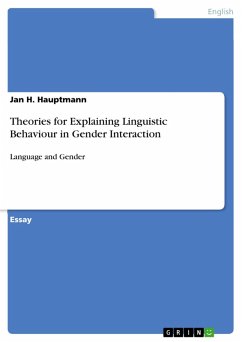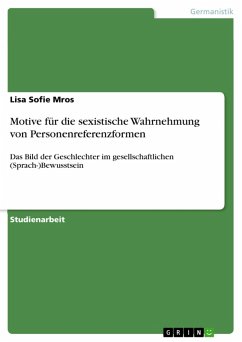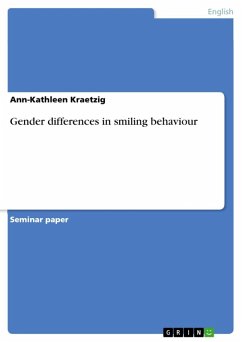Essay from the year 2006 in the subject English Language and Literature Studies - Linguistics, grade: 1,3, Queen's University Belfast (School of English), course: Sociolinguistics, language: English, abstract: Already in the 1960s and 70s have feminist linguistics started to examine language on the basis of gender questions. Numerous works focused on the problem whether women are discriminated through a more powerful "male" language use and how sexist language might be avoided. Within the subject, several different theories arose. This essay will at first demonstrate the development process of two main theories dealing with gender and language (the so called dominance and the difference-theory) and afterwards assess their adequacy in explaining linguistic behaviour in gender interaction. In 1973, Robin LAKOFF, a feminist linguist at the University of California, laid the foundations for a methodical and academic research on the subject of women's language. Her most important works Language and Woman's Place and Women's Language threw light upon the possibility of discrimination through language use. A very important example for such a case might be LAKOFF's observation of the way how women see themselves and which role they are holding within the American society. Thus, LAKOFF does not only examine the specific language used by women, but also the language used about women . Since language is guided by our thoughts, she considers it to be a mirror of the speaker's subconsciousness . In order to investigate this phenomenon more closely, LAKOFF scrutinized her own expressions as well as expressions of friends and acquaintances. Furthermore, she analysed conversations in the television programme. As the field of this small study was very restricted, no universality is claimed for its results , but as an outcome, several criteria are established that are seen as typical for women's language. These standards are as follows:
Dieser Download kann aus rechtlichen Gründen nur mit Rechnungsadresse in A, B, BG, CY, CZ, D, DK, EW, E, FIN, F, GR, HR, H, IRL, I, LT, L, LR, M, NL, PL, P, R, S, SLO, SK ausgeliefert werden.









